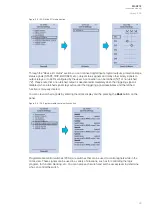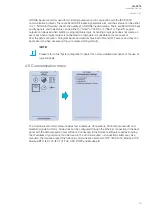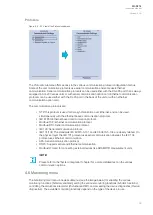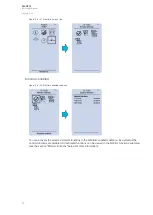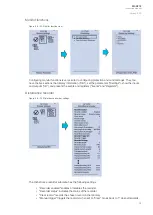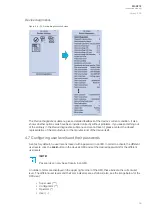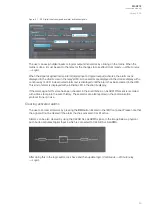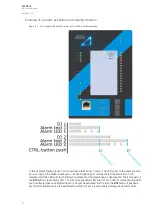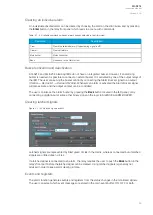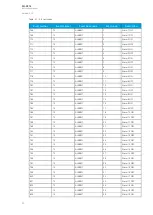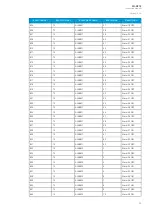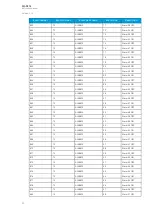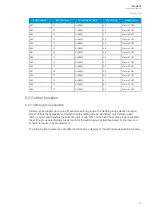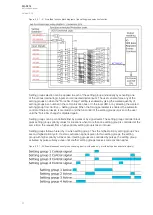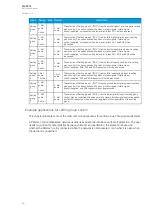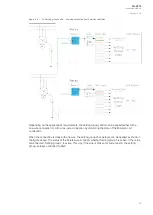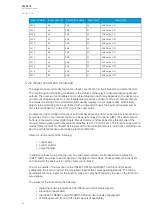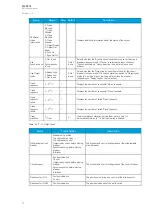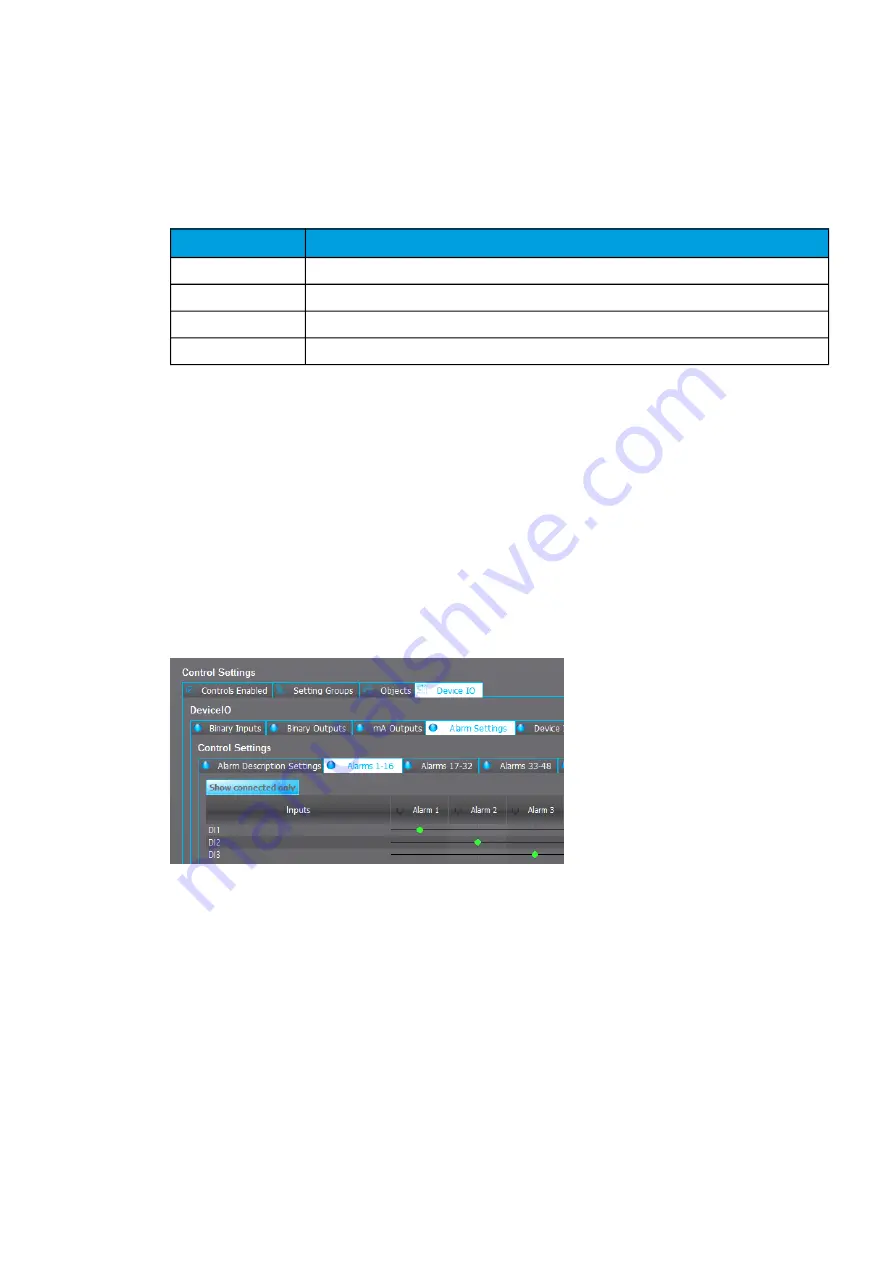
Clearing an individual alarm
An individual activated alarm can be cleared by choosing the alarm in the
Alarm view and by pressing
the EEnt
nter
er button in the relay front panel which leads to a menu with commands.
Table. 5.1 - 4. Available commands when an alarm has been selected in the
Alarm view.
Command
Description
Clear
Clears the selected alarm (if the activating signal is off).
Clear all
Clears all alarms.
Mute buzzer
Mutes the buzzer.
Back
Goes back to the
Alarms view.
Buzzer activation and deactivation
AQ-S214 and AQ-S254 Alarming IEDs do not have an integrated buzzer. However, if an alarming
buzzer is needed it is possible to connect an exteral buzzer. It is activated by one of the output relays of
the IED. The user can set up the buzzer control by connecting the Alarm Buzzer signal to an output
(
Control
→
Device I/O
→
Device IO Matrix). Whenever an alarm is activated the Alarm Buzzer signal
will also activate and the output contact can be controlled.
The user can silence the alarm buzzer by pressing the Back
Back button located in the IED panel, or by
connecting a digital input or some other binary signal in the logic to SILENCE ALARM BUZZER.
Clearing latched signals
Figure. 5.1 - 40. Latched signals as dots.
Latched signals are represented by filled green circles in the matrix, whereas connected but unlatched
signals are unfilled green circles.
If a latched signal is connected to an alarm, the relay requires the user to push the Back
Back button in the
relay's front port before the latched signal can be cleared. Using latched signals is generally not
advised in order to keep alarm clearing simple.
Events and registers
The alarm function generates events and registers from the status changes in the monitored signals.
The user can select which event messages are stored in the main event buffer: ON, OFF, or both.
A
AQ
Q-S214
-S214
Instruction manual
Version: 2.04
42

